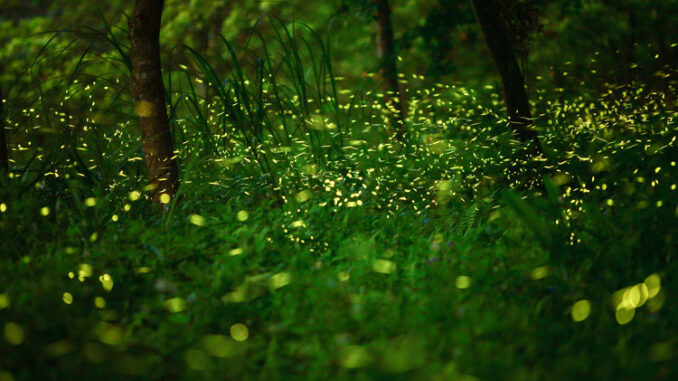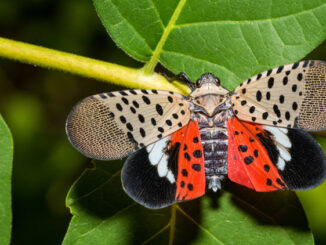
Some call them lightning bugs. Others call them fireflies. Both names refer to the beetles that light up our summer evenings. Adults and children alike delight in observing these fascinating creatures, but most do not know how or why they light up.
Lightning bugs have a lantern organ in their abdomen where a chemical reaction occurs. When certain chemicals in this organ combine, light is produced. This light production by living things is called bioluminescence. Lightning bugs start and stop their glow with oxygen. This allows them to flash the light off and on in distinct patterns.
Bioluminescence serves as a warning to potential predators. It says, “Don’t eat me! I taste bad!” Firefly blood has a bitter taste that predators associate with their light and quickly learn to avoid them.
Bioluminescence also helps adults attract mates. There are many different species of fireflies, and each species has its own flashing pattern. This allows them to identify and attract those of their own species. In most North American firefly species, the males fly above and flash in their distinct pattern signaling to females resting in vegetation below. If a female sees a male that she likes, she will signal to him by flashing in her own distinct pattern.
Unfortunately, some firefly populations are declining so you might be seeing fewer and fewer fireflies. This is a result of pesticide use, habitat loss, and light pollution. Light pollution is the presence of excessive nighttime light by man-made sources such as streetlights. This artificial light interferes with the mating ritual of fireflies, making it harder for them to find a mate and reproduce.
What Can You Do? What can you do to reduce light pollution?
Photo Credit: Photographic by Tommy Hsu/Moment Open/Getty Images



